Aarushi Karimpanal is a product designer at Spanner Product Development who for her thesis project created the tEQ, the Tangible Equalizer, in the Engineering Design Innovation Masters program at Northwestern. In honor of graduation season, we asked Aarushi to shares aspects of the design research in accessibility and sound design.
Aarushi grew up surrounded by music, singing and truly appreciating music as an artform and was inspired by the user group, the Interactive Audio Lab’s work on Hapt EQ. You can view more of the final result of the teQ here!
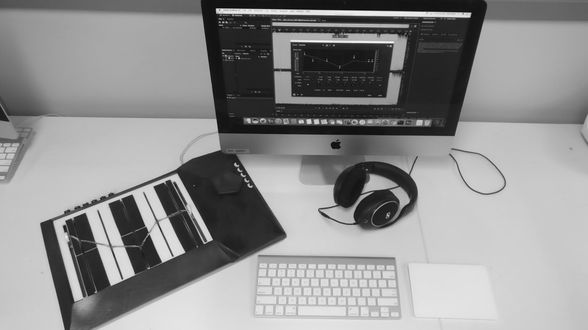
Music is an outlet, an escape, a universal language. It is an art form that tells stories, stirs emotions and connects people. Integration of technology with music has led to the development of Digital Audio Workstations (DAW’s), which have greatly influenced how artists dream and bring their work to life. Digital Audio Workstations give you the power to create amazing sounds anywhere, anytime. Several aspects of the software rely heavily on visual feedback, so where would that leave someone who can’t see?
This project focuses specifically on Equalization (EQ) within DAW’s. An equalizer is a tool that allows the user to make changes to the volume of all the frequencies in a track. A typical EQ is shown in the picture below, there are many colors, the changes on this graph are done using the mouse and clicking and dragging anywhere on the curve. For someone who is blind, this specific task within a DAW becomes a challenge. tEQ (the Tangible Equalizer) aims at creating a physical representation of this curve using a magnetic chain.

“It was daunting… to go into this very sighted world of DAWs, not being able to see a thing, but still edit, record, mix, make music. For a blind person to operate any DAW, they need to be operating at a speed that is not only acceptable for the client, but it needs to be acceptable for the workflow,” said Buddy as he reflected on being a totally blind producer who has run his own studio for the past 30 years. Interestingly, for 40% of the people I interviewed, built a career out of music and audio production.
With the universal shift from analog to digital, the visually impaired depend heavily on screen readers. A screen reader scans the entire screen and reads aloud each and every option that is provided on it and has had a significant impact on accessibility across digital platforms.
Angus, who lost his vision partially due to retinitis pigmentosa, has a 24-channel console he used for over 20 years in his studio. He puts pieces of tape every alternate channel of the mixing board so that he can feel which one he is on so that he can work efficiently with clients. I watched him work on his 15-inch desktop computer that was zoomed to 400-500% on his screen. This is how he used his iPhone as well, constantly changing the contrast, till his eyes could adjust.
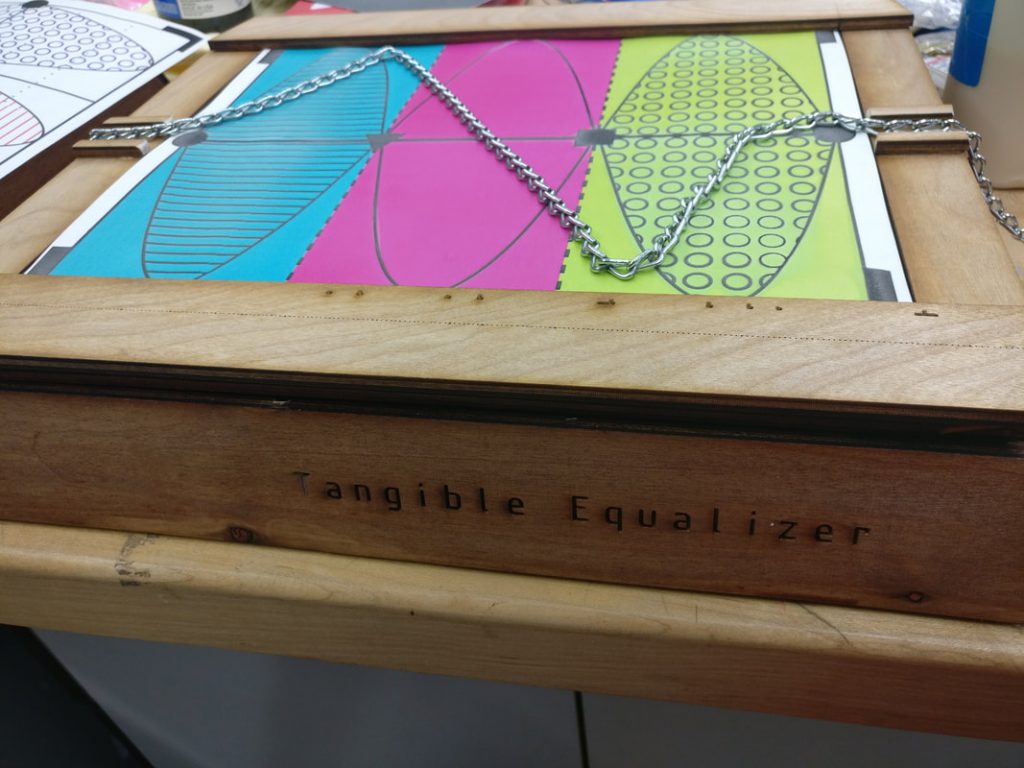
I was able to design prototypes and get Angus’ valuable feedback to test various textured contrasting surfaces as visual and tactile references for orientation and navigation on physical EQ graph. He loved being able to physically feel the curve and believed it would increase his speed and efficiency when he could avoid sitting 3-5 inches away from the screen, straining his eyes to see 0.2% of his screen.
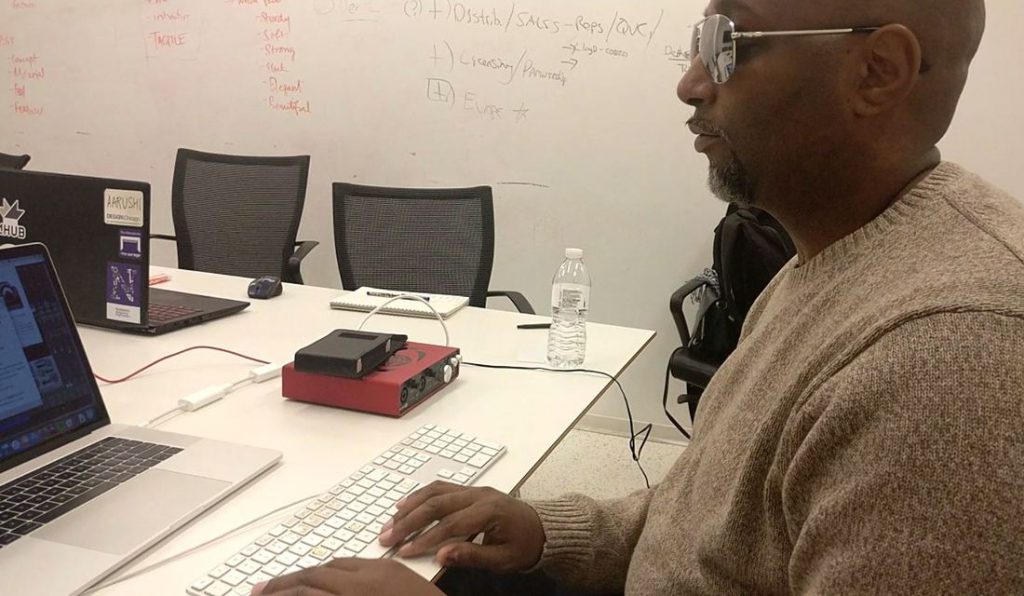
Buddy, the blind producer from earlier, also runs a school of audio production for the blind. His perspective was that his creativity was limited till he became more fluent in using the DAWs. Finally, after 4 years, he said that he is now able to use the tools to bring his work to life. There is a pretty steep learning curve to using a DAW and from others I interviewed, this is one of the main reasons they stay away from it. While he personally did not need tEQ, when he tested some of the later prototypes, he thought it would be a great learning tool and make the audio production a little less intimidating.
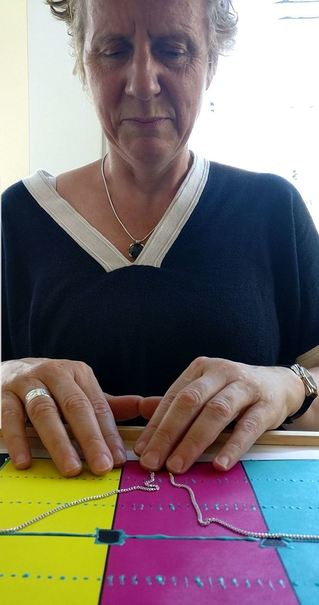
95% of the people I interviewed played a musical instrument as a hobby or professionally. “It’s a natural thing, people with visual challenges usually have the gift of good hearing and a lot of them have a gift of musical construct” said Prince, a blind radio jockey who lives and breathes music. For this reason, having the users focus on the audio feedback as they made changes using the chain gave them control and artistic independence.
Emma, who lost her vision nearly 30 years ago as a teenager, had never interacted with a DAW. She quickly understood and enjoyed playing with the EQ to hear how it changed the tone and feel of Redbone when testing with a prototype.
Visual Impairment is a decreased ability to see to a degree that causes problems not fixable by usual means, such as glasses. In the United States, legal blindness refers to a medically diagnosed central visual acuity of 20/200 or less in the better eye with the best possible correction, and/or a visual field of 20 degrees or less. Therefore there is a range of sight that constitutes being visually impaired.
The design of tEQ is intended to be simple and robust product that allows the user to feel the musical changes they make and hear the outcomes of their actions instantaneously. tEQ is developed based on the technology of Zforce Air sensors used in the AirBar. Participants expressed that they wanted the product to have a similar feel to other sound equipment so that it could fit into a home studio. tEQ is designed to look bold and to feel elegant.
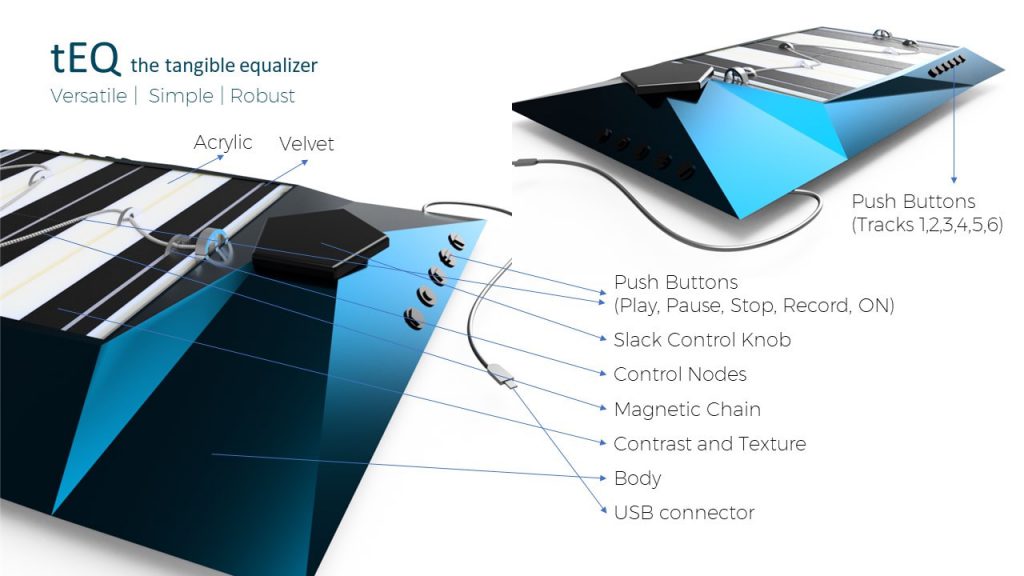
tEQ is based on the inclusive design model, with a goal of building a universal product by focusing on the extremes use cases. The ethnographic research included 18 blind people, from across the USA and UK. For a balanced perspective, I also interviewed 19 musicians and producers with no visual impairment. All names are assumed alias’. It was a humbling experience learning from and interacting with all the musicians I was lucky to find. I am grateful to them for spending time talking to me and hope that sharing some of the insights can attest to the value in really understanding the users and their journeys in product design.

